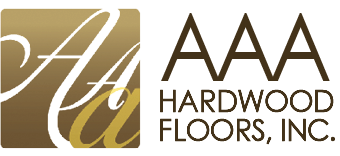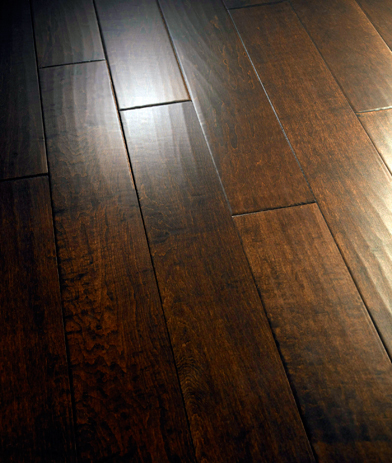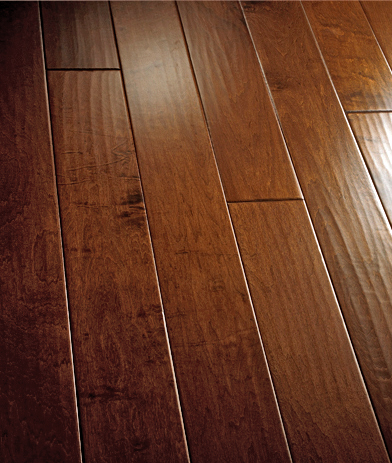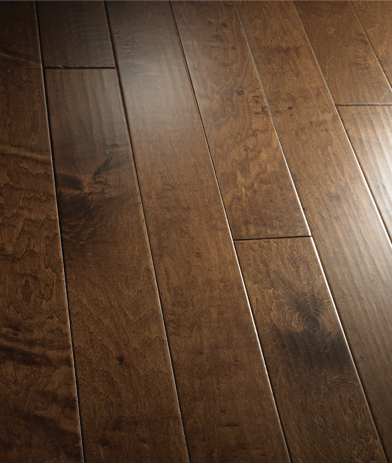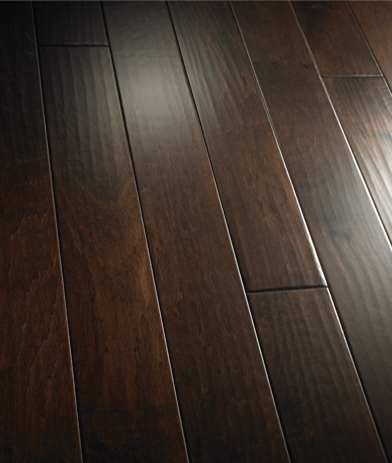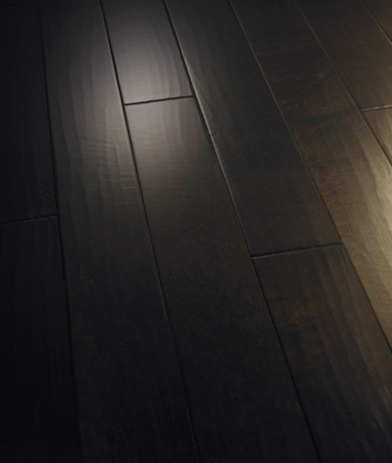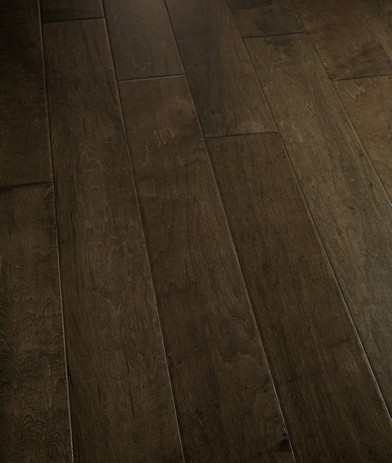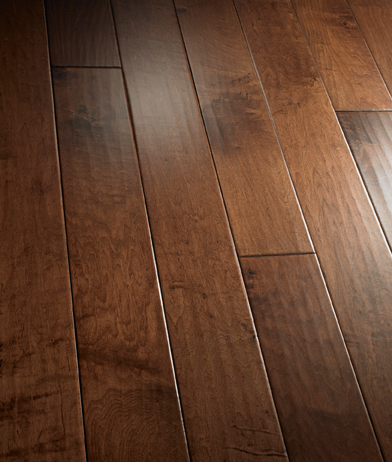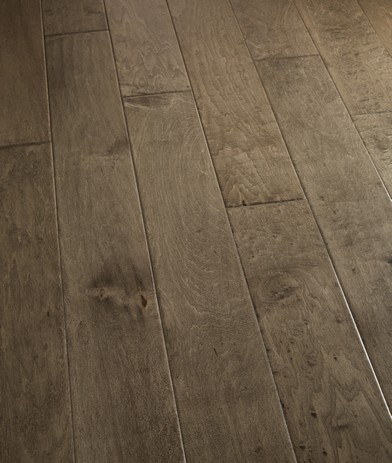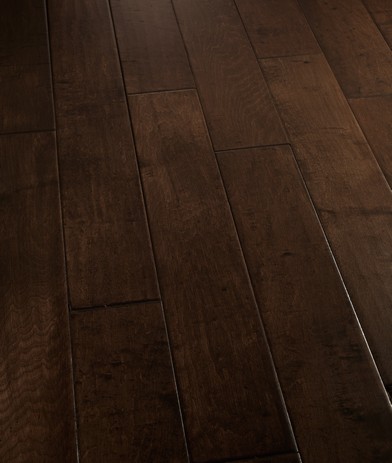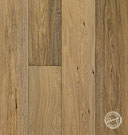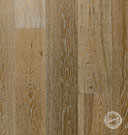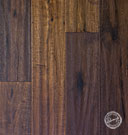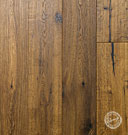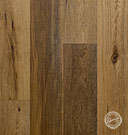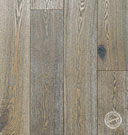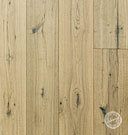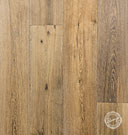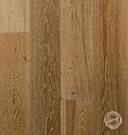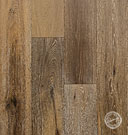Hardwood
Hardwood flooring is one of the most popular renewable flooring choice in the world today. Hardwood sourced from sustainability managed forests or from regulated plantations helps reduce the ecological impact of the lifestyle choices. There are two types of hardwood to select from, Solid Hardwood Flooring and Engineered Hardwood Flooring to chose from.
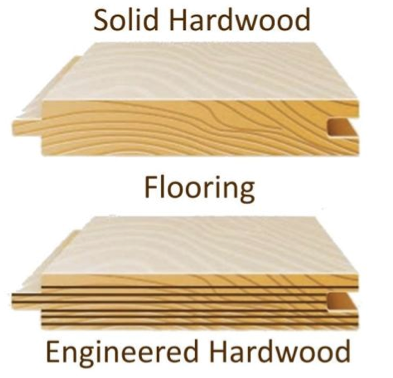
Engineered Hardwood Flooring
Engineered hardwood has a cross-plywood construction, with a solid wood veneer laminated to the top. Solid hardwood is just that, solid. Both styles range in thickness from 5/16 to 3/4 inch. Both types of floors come prefinished or unfinished and come in a variety of widths and styles.
There are several benefits to engineered hardwood. Here are just a few. Engineered hardwood is more dimensionally stable than solid wood flooring. Engineered floors can be glued down directly to concrete, floated or stapled. They can be installed above, on, or below grade. Engineered floors are less prone to cupping and usually have a lifetime structure warranty. These floors can be installed over radiant heat. Engineered hardwood can also be used to make intricate patterns, such as herringbone, Hungarian point, Dutch weave and more. The downside to engineered flooring is the process by which it is made. The adhesives used may contain formaldehyde or other toxic chemicals.
The top veneer on engineered floors can range from 0.6 millimeters to a full 1/4 inch. There are essentially four different ways to saw the veneers for flooring. The four cuts are: Rotary, Sawn face, Rift and quartered, and Quarter sawn. Sawn face and Rift and quartered material is the exact same cut as a solid hardwood. Engineered hardwood also comes unfinished, most people cannot tell the difference between engineered unfinished and a solid unfinished.
Solid Hardwood Flooring
There are actually not as many benefits to solid wood when compared to engineered. Installing solid hardwood flooring helps to create a structurally sound floor and helps with acoustics within the home. Solid wood has a surface layer of 1/4 inch that can be refinished several times. Manufacturing solid hardwood is cleaner process than that of engineered.
The disadvantages of solid wood are as follows. Solid wood is very susceptible to moisture. Cupping and crowning problems are common. These floors are not as stable, however some species are inherently more stable than others. It is common to have cracks and end gaps in the flooring due to seasonal changes. Solid wood flooring cannot be installed over radiant heat. Extreme low humidity or dryness will cause the wood to split and separate. Solid wood floors are more difficult to install and should not be glued to concrete slabs. There is an exception to this rule. Shorts (planks that are typically 15 inches or less) can be glued to concrete slabs.
No matter which type of hardwood floor you decide to choose, you will still get the benefit of added value to your home and the warmth and feel it creates. Take the time to learn about the different products in the market, this way you don’t get stuck with a disposable floor.
Here at AAA, we will schedule a free consultation to meet with you to help you decide which is right for you based on your needs.
We carry a wide selection in our showroom or we can come to you. Here’s a few that we carry below:
- Provenza Old World Weathered Ash Floor Sample Thumbnail
- Provenza Old World Tumbleweed Floor Sample Thumbnail
- Provenza Old World Tortoise Shell Floor Sample Thumbnail
- Provenza Old World Toasted Sesame Floor Sample Thumbnail
- Provenza Old World Soft Tan Floor Sample Thumbnail
- Provenza Old World Soft Grey Floor Sample Thumbnail
- Provenza Old World Milestone Floor Sample Thumnail
- Provenza Old World Fossil Stone Floor Sample Thumbnail
- Provenza Old World Fawn Floor Sample Thumbnail
- Provenza Old World Fallen Timber Floor Sample Thumbnail
- Provenza Old World Falcon Floor Sample Thumbnail
